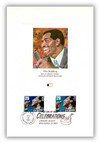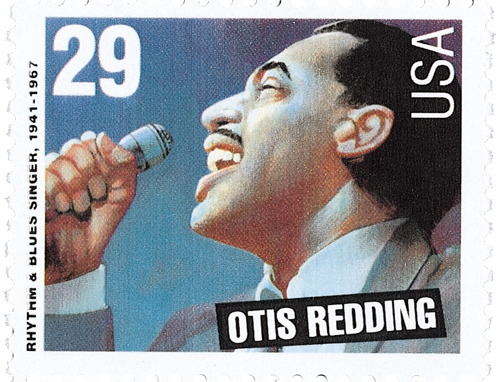
# 4900847 - 1993 Rock 'n' Roll Otis Redding Combo PFCD
Often called the ultimate philatelic issue, the Fleetwood Proofcard is a distinctive commemorative with an elegantly embossed surface. Each Proofcard bears an original work of art complementing the theme of the stamp and created exclusively for Fleetwood by a leading American artist. Proofcards are often collected on their own, but would also make a beautiful addition to your existing stamp or cover collection.
Birth Of Otis Redding
Redding enjoyed singing from an early age, participating in the local church choir and learning to play guitar, piano, and drums. By the time he was in his teens, he was earning $6 to perform gospel songs on the radio.
Redding quit school when he was 15 to help support his family. He held a variety of jobs and was also able to work occasionally as a musician. In 1958, he participated in a teen talent contest, attracting the attention of locally famous guitarist Johnny Jenkins. Jenkins offered to play with him and Redding went on to win 15 consecutive weekly talent shows. Redding was then invited to replace the frontman of a local band but was then invited to replace his idol Little Richard in his band when he quit rock ‘n’ roll to dedicate himself to gospel music.
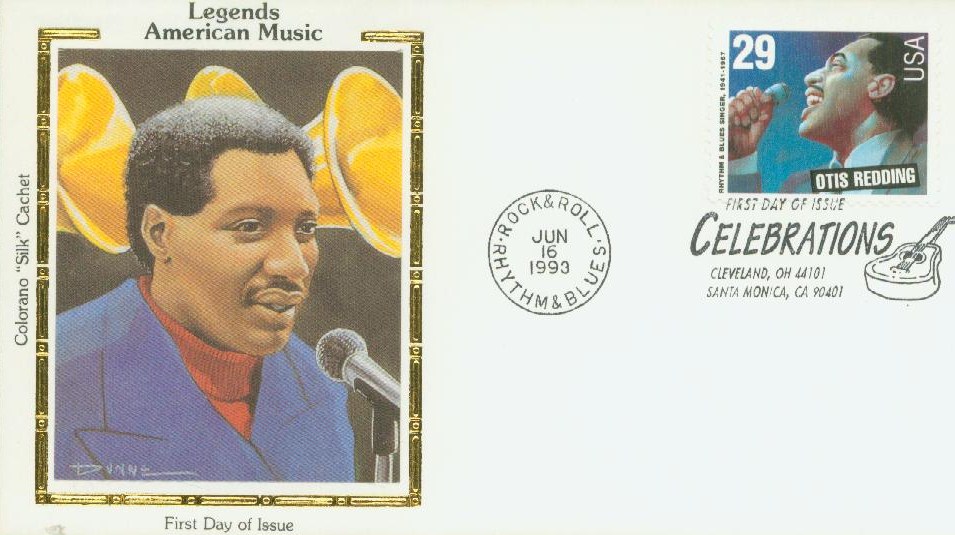
Redding didn’t stay with the band long and in 1960 he moved to Los Angeles. There he wrote his first songs, “She’s Allright,†“Tuff Enuff.†“I’m Gettin’ Hip,†and “Gamma Lamma.â€Â Soon he was touring the South with Pat T. Cake and the Mighty Panthers. When a chance trip took him to Memphis however, Redding’s childhood dream was fulfilled.
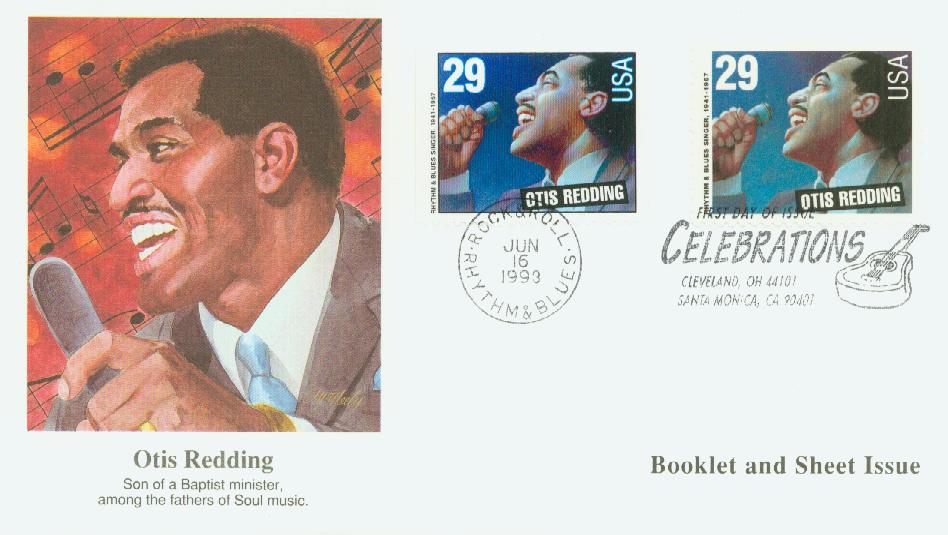
In 1962, he offered to drive Jenkins to a recording session at the Stax Studio in Memphis.  The session was largely unproductive and ended early. Redding was then invited to sing two songs. While they thought his rendition of “Hey Hey Baby†sounded too much like Little Richard, they were blown away by his performance of “These Arms of Mine.â€Â One of the studio operators said “There was something different about [the ballad]. He really poured his soul into it.â€Â Redding was then signed to a label and the two songs were released that October. “These Arms of Mine†hit the charts the following year and became one of his most successful songs.
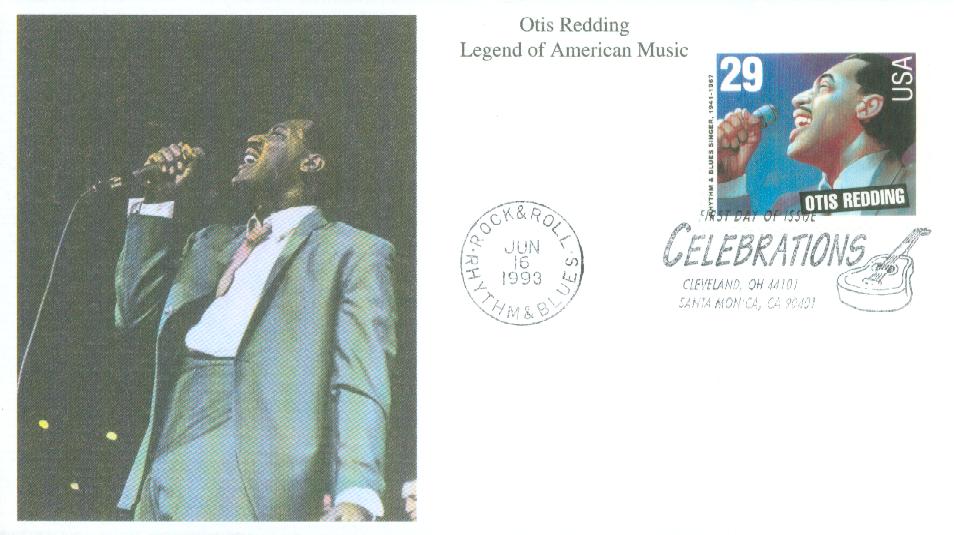
Redding released his debut album in 1964 and it performed well, reaching number 20 on the R&B chart and 85 on the Billboard Hot 100. During this time he performed at the Apollo Theater and recorded a live album there. The success of his albums during this time allowed him to buy a 300-acre ranch in Georgia and he co-founded a production company. Redding was then one of the first soul artists to perform for rock ‘n’ roll audiences in the western US.
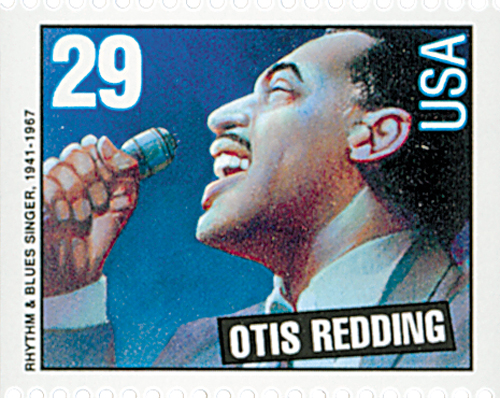
In 1966, Redding recorded and released his signature song, “Try a Little Tenderness.â€Â That same year he played in London before going on a European tour. The following year he was the closing act on Saturday night of the Monterey Pop Festival. Up until this time he had mostly played for African American audiences. But his performance that night was electric and involved the audience more than any other. It helped boost him from a local to a national star and was a turning point of his career.
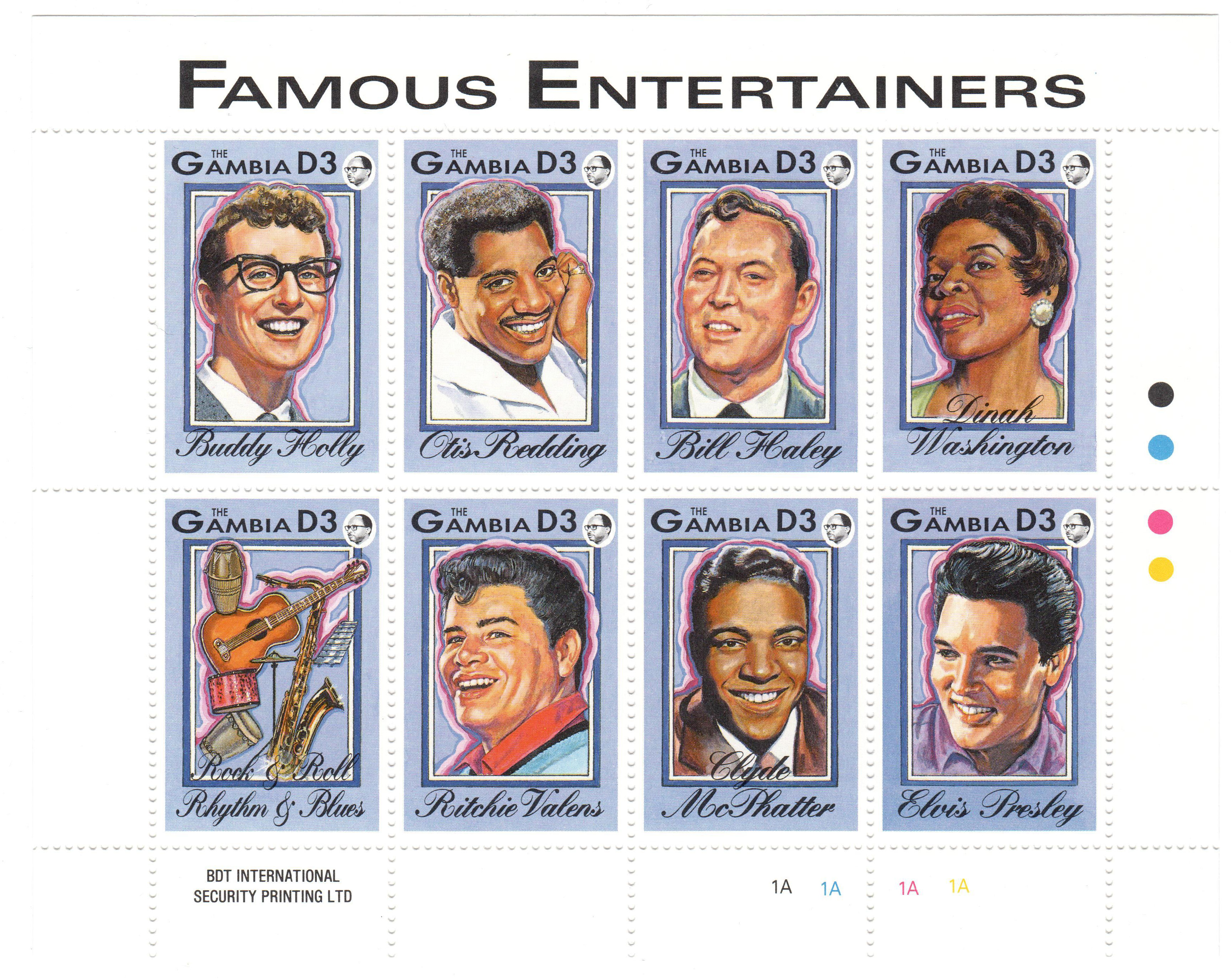
In early December 1967, Redding went back to the studio to record his next album. He recorded a song he co-wrote, “(Sittin’ On) the Dock of the Bay.â€Â The label and others in the studio thought the song was not R&B and might damage their reputation, but Redding wanted to explore more diverse music and insisted the song would be a success.
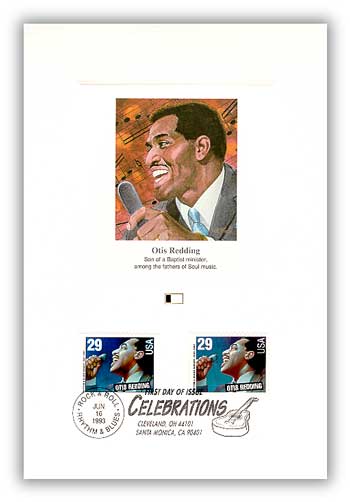
Shortly after that recording session, Redding performed in Cleveland and then boarded his personal airplane for a concert in Madison, Wisconsin. In spite of the poor weather, they chose to fly anyway. Then about four miles from their destination, they crashed into a lake, killing all but one of the passengers. Redding was among those killed; he was only 26 years old. Recorded three days before his death, “(Sittin’ on) The Dock of the Bay†was released in 1968, reached the charts in one month and stayed there for almost a year. Though brief, Redding’s music career influenced generations of musicians. It’s been said that his marriage of traditional R&B with folk music in the 1960s took soul to a new level.
Â
Often called the ultimate philatelic issue, the Fleetwood Proofcard is a distinctive commemorative with an elegantly embossed surface. Each Proofcard bears an original work of art complementing the theme of the stamp and created exclusively for Fleetwood by a leading American artist. Proofcards are often collected on their own, but would also make a beautiful addition to your existing stamp or cover collection.
Birth Of Otis Redding
Redding enjoyed singing from an early age, participating in the local church choir and learning to play guitar, piano, and drums. By the time he was in his teens, he was earning $6 to perform gospel songs on the radio.
Redding quit school when he was 15 to help support his family. He held a variety of jobs and was also able to work occasionally as a musician. In 1958, he participated in a teen talent contest, attracting the attention of locally famous guitarist Johnny Jenkins. Jenkins offered to play with him and Redding went on to win 15 consecutive weekly talent shows. Redding was then invited to replace the frontman of a local band but was then invited to replace his idol Little Richard in his band when he quit rock ‘n’ roll to dedicate himself to gospel music.

Redding didn’t stay with the band long and in 1960 he moved to Los Angeles. There he wrote his first songs, “She’s Allright,†“Tuff Enuff.†“I’m Gettin’ Hip,†and “Gamma Lamma.â€Â Soon he was touring the South with Pat T. Cake and the Mighty Panthers. When a chance trip took him to Memphis however, Redding’s childhood dream was fulfilled.

In 1962, he offered to drive Jenkins to a recording session at the Stax Studio in Memphis.  The session was largely unproductive and ended early. Redding was then invited to sing two songs. While they thought his rendition of “Hey Hey Baby†sounded too much like Little Richard, they were blown away by his performance of “These Arms of Mine.â€Â One of the studio operators said “There was something different about [the ballad]. He really poured his soul into it.â€Â Redding was then signed to a label and the two songs were released that October. “These Arms of Mine†hit the charts the following year and became one of his most successful songs.

Redding released his debut album in 1964 and it performed well, reaching number 20 on the R&B chart and 85 on the Billboard Hot 100. During this time he performed at the Apollo Theater and recorded a live album there. The success of his albums during this time allowed him to buy a 300-acre ranch in Georgia and he co-founded a production company. Redding was then one of the first soul artists to perform for rock ‘n’ roll audiences in the western US.

In 1966, Redding recorded and released his signature song, “Try a Little Tenderness.â€Â That same year he played in London before going on a European tour. The following year he was the closing act on Saturday night of the Monterey Pop Festival. Up until this time he had mostly played for African American audiences. But his performance that night was electric and involved the audience more than any other. It helped boost him from a local to a national star and was a turning point of his career.

In early December 1967, Redding went back to the studio to record his next album. He recorded a song he co-wrote, “(Sittin’ On) the Dock of the Bay.â€Â The label and others in the studio thought the song was not R&B and might damage their reputation, but Redding wanted to explore more diverse music and insisted the song would be a success.

Shortly after that recording session, Redding performed in Cleveland and then boarded his personal airplane for a concert in Madison, Wisconsin. In spite of the poor weather, they chose to fly anyway. Then about four miles from their destination, they crashed into a lake, killing all but one of the passengers. Redding was among those killed; he was only 26 years old. Recorded three days before his death, “(Sittin’ on) The Dock of the Bay†was released in 1968, reached the charts in one month and stayed there for almost a year. Though brief, Redding’s music career influenced generations of musicians. It’s been said that his marriage of traditional R&B with folk music in the 1960s took soul to a new level.
Â



